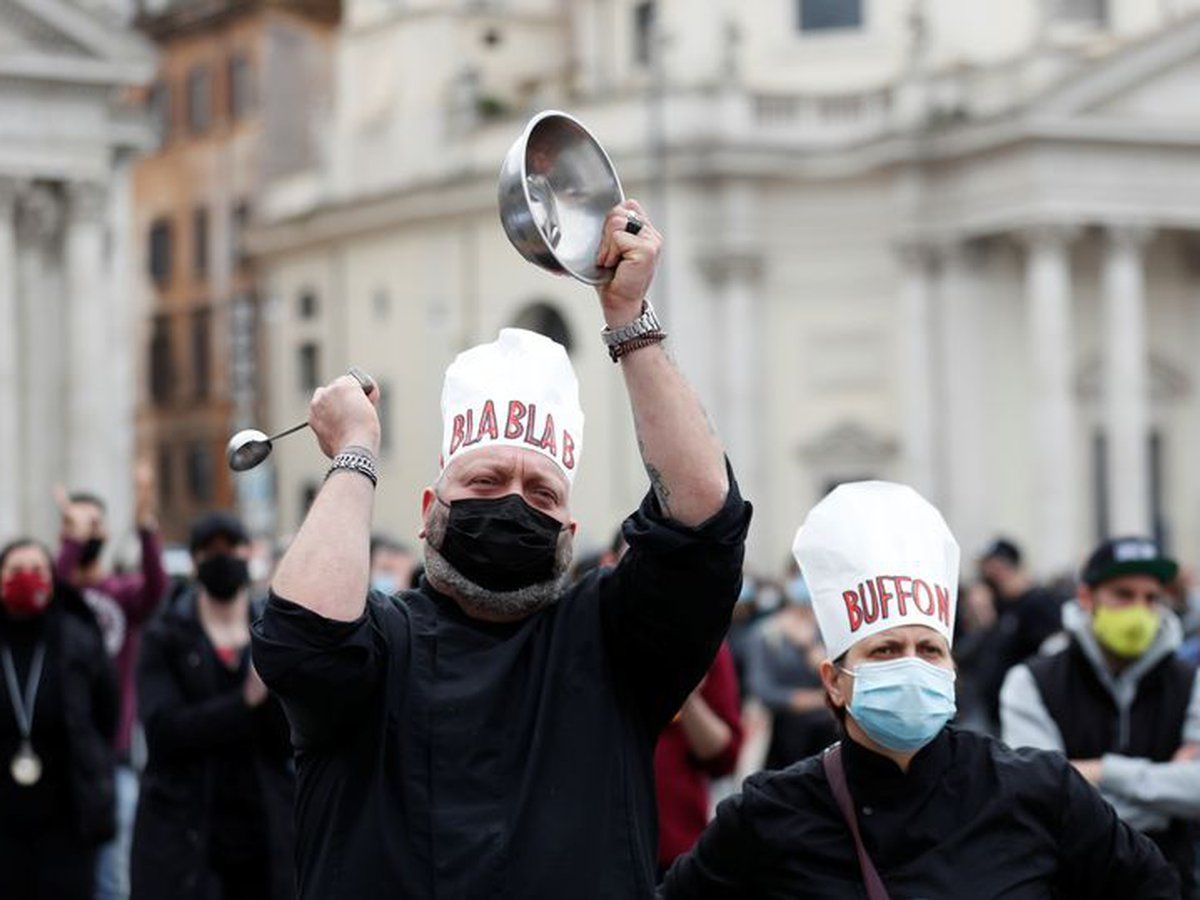For Europeans, the second wave of COVID-19 is worse than the first

A few minutes every morning is all you need.
Stay up to date on the world's Headlines and Human Stories. It's fun, it's factual, it's fluff-free.
After weeks of waffling, November finds multiple European countries either reentering lockdowns or imposing other severe restrictions.
As COVID-19 cases began to decline in Europe over the summer, restrictions across the continent – some of the most stringent in the world – were lifted. The specter of the virus still hung over the nations, especially as cases around the world continued going up, but for a brief few months, life in Europe returned to something resembling normalcy.
Regrettably, autumn has brought a second wave of the coronavirus to Europe, one that has been worse than the first wave for many countries. This resurgence wasn’t unexpected, as experts at the World Health Organization (WHO) warned of a second wave back in May. After the first round of costly lockdowns, though, governments have been reluctant to take such drastic actions again.
Now, after weeks of waffling, November finds multiple European countries either reentering lockdowns or imposing other severe restrictions. Here is a summary of how some of these countries are responding to the second wave of COVID-19 within their borders.
The United Kingdom
After assuring the nation for weeks that the country would not return to lockdown, British Prime Minister Boris Johnson was forced to go back on his word. On Saturday, October 31, after a series of delays, Johnson spoke to the nation to announce a nationwide lockdown with hopes of getting coronavirus cases down before the Christmas holiday season.
The United Kingdom, which has been one of the worst-hit countries in the world, has been setting grim COVID-19 records throughout October. The increase in recorded coronavirus cases led Johnson to warn at the beginning of the month, “This could be a very tough winter for all of us.”
Nonetheless, Johnson remained defiant against pressure to implement a full lockdown. The country was put into a three-tier system, with the most restrictive, tier three, initially only being implemented in the northwestern Liverpool area. Eventually, other areas of the country were also put under the strictest restrictions, which included no indoor or outdoor socializing between households.
As cases continued to increase, though, Johnson came under increasing pressure to take more drastic steps, especially with concerns that families would not be able to gather for Christmas. At the beginning of November, the UK had the third most cases (after France and Spain) and the highest number of deaths at nearly 47,000.
The second UK lockdown of the year begins November 5 and ends December 2. Among the new restrictions are the closing of restaurants, pubs, gyms and nonessential shops. People are expected to stay at home except to go to work, school or complete essential tasks, including food shopping and exercise. No indoor gatherings are allowed and an individual can only meet with one person from a different household.
The national lockdown is expected to take a bite out of the nation’s economy. Many business owners and leaders have decried news of the new lockdown, having previously urged Johnson not to take this step. But medical experts say it is necessary to contain the spread of the virus.
Spain
In March, Spain was one of the first nations in the world to go into a national lockdown. Spain’s restrictions were considered among the most severe in the world, with even outdoor exercise prohibited in the first weeks of the lockdown. By May, restrictions were being lifted in stages as cases declined considerably and hospitals were no longer overrun.
However, by July, Spain’s COVID-19 cases were on the rise again and individual regions of the country were facing lockdowns.
The community of Madrid, which includes Spain’s capital city, has been the most severely hit by this resurgence, with Madrid being the worst hot spot in Europe. As a result, the city also returned to lockdown, but in a piecemeal fashion that only required specific health districts (zonas básicas de salud) to be restricted if cases rose to 1,000 per every 100,000 people.
This led to a political confrontation between Madrid’s community president, Isabel Díaz Ayuso, a member of Spain’s right-wing Popular Party (PP, Partido Popular) and Spain’s prime minister, Pedro Sánchez, who is the head of the left-wing Spanish Socialist Workers’ Party (PSOE, Partido Socialista Obrero Español). Sánchez has urged Ayuso to enforce greater restrictions, but she has resisted.
In order for Sánchez to have authority in how the communities address their COVID-19 outbreaks, the national government has once again declared a state of alarm (estado de alarma), as it did in March to enforce the national lockdown. For the time being, despite the nation reentering the state of alarm, each of Spain’s 17 communities still has the authority to set restrictions as it sees fit.
In Madrid, citizens are required to wear masks, bars are closed by midnight, and gatherings of more than six people are prohibited. Additionally, while there is not technically a curfew, people from different households are not allowed to meet up between midnight and 6 a.m.
Over the All Saints’ Day holiday weekend from October 30 to November 2, Madrid closed its borders so that residents of the city could not leave the region. However, restrictions within the city are still based on health districts, so some areas of the city are less restricted than others.
Spain recorded 25,595 new cases on the Friday before the holiday weekend, the highest daily total yet for the country. Its seven-day total was also the highest on record, with the country now having had over 1.2 million cases and 35,878 deaths.
Sweden
Like the UK and Spain, Germany and France are also seeing record numbers of cases and entering new lockdowns. Around the world, lockdowns and other types of restrictions have been advised by medical experts, but such efforts in the United States have been met with protests.
Those who oppose restrictions point to Sweden as the example of a country that has done well in managing the pandemic despite a lack of governmental controls. These critics of restrictions argue that Sweden is on the path to herd immunity. However, as Sweden also experiences a second wave of COVID-19, some have cautioned that the nation’s “success” is not quite what it seems.
While the Swedish government has been praised in some corners for its lax approach, there have been those both within and outside the country that have called the response a disaster. While the death rate in Sweden has been lower than larger countries like the UK, compared to its Scandinavian neighbors, Sweden has had a much more severe outbreak. Sweden’s death rate is in the top 15 worldwide.
Additionally, while Sweden’s economy has fared better than most of the European Union, it hasn’t been substantially better, especially when compared to the economies of other Scandinavian countries.
As Sweden’s cases began to surge again in October, there were reports that the country might be reconsidering its approach and looking to implement restrictions. As of now, though, that hasn’t been the case, with Sweden still relying on a noncoercive method that encourages its citizens to practice caution but does not require any specific actions.
On October 29, Sweden recorded 2,820 new cases, its highest daily total as of that moment. Total cases in Sweden are just north of 120,000, with recorded deaths equaling 5,938.
For comparison, Sweden’s national population is a little more than 10 million people, whereas London, the UK’s capital city, has nearly eight million people. The city of Madrid is home to 3.3 million people, while the full community has roughly 6.7 million people.
Have a tip or story? Get in touch with our reporters at tips@themilsource.com




Comments ()